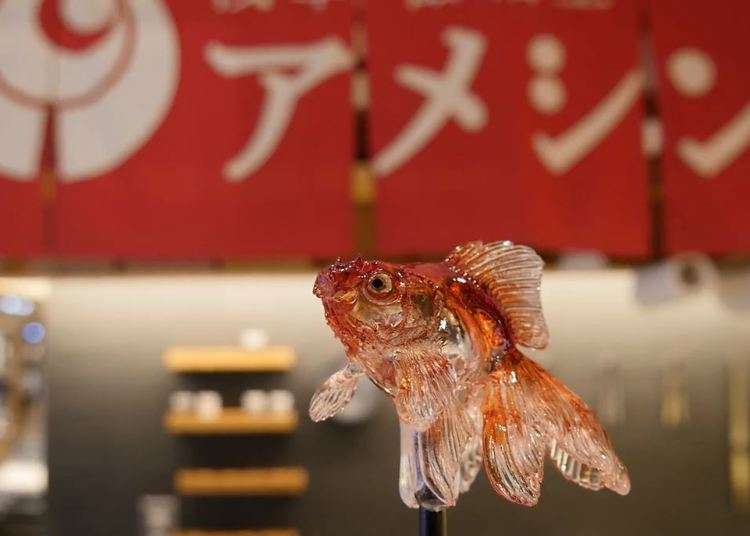
Amezaiku - Art or Edibles?! These Traditional Japanese Candies Will Amaze You!
- Written by: Timothy Sullivan
When we think of Japanese artisans, often the first images that come to mind might be makers of glass, ceramics and katana – but candy? As it turns out, a small number of people engaged in the highly skilled art of amezaiku, or candy crafting. Shinri Tezuka, owner of a traditional candy shop called Ameshin, is one of only perhaps a few dozen amezaiku artists to be carrying on a tradition that traces back over 800 years.
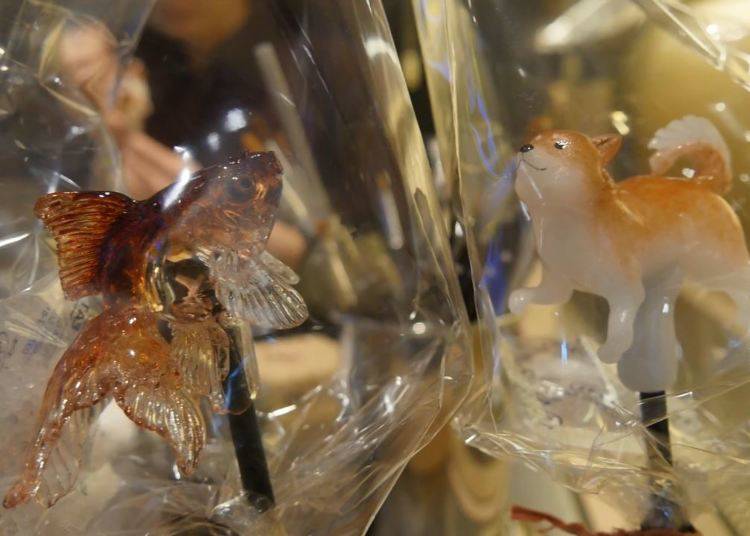
Ameshin has two shops in the Asakusa area. At their head office, they exhibit various pieces and also hold occasional workshops on the art form. But if you visit their main shop in Tokyo Skytree Town Solamachi, you might have the chance to watch Tezuka at work.
Making the Magic

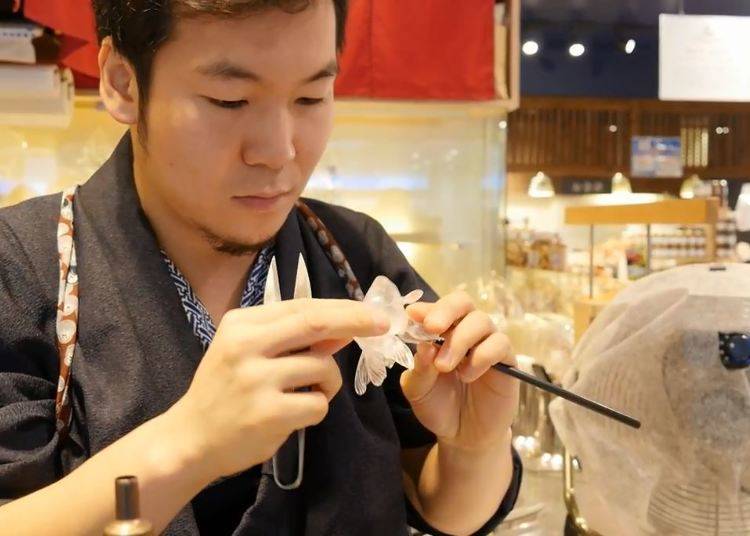
The candy base, a mixture of sugar, starch and water, is prepared ahead and kept at a stable temperature to preserve its texture and appearance. At first, Tezuka pulled away a small clump by hand, swiftly pulling and kneading candy into a base figure. As one may expect with any traditional art form, the range of tools used to produce amezaiku pieces is quite basic: a heated pot in which to heat the base material; a heat gun, to precisely reheat small areas of the piece and make them pliable again; and a set of hand shears, with which to cut and texturize the candy mass. This tool set has a practical simplicity as well: since amezaiku artists must shape pieces while they are still fairly hot, they have only a few short minutes in which to complete a work before it hardens. And this according to Tezuka is exactly the challenge of amezaiku: how to form a single piece from blob into a completed work in a wink of time. To him as well, this is what also makes amezaiku so interesting for people to watch.
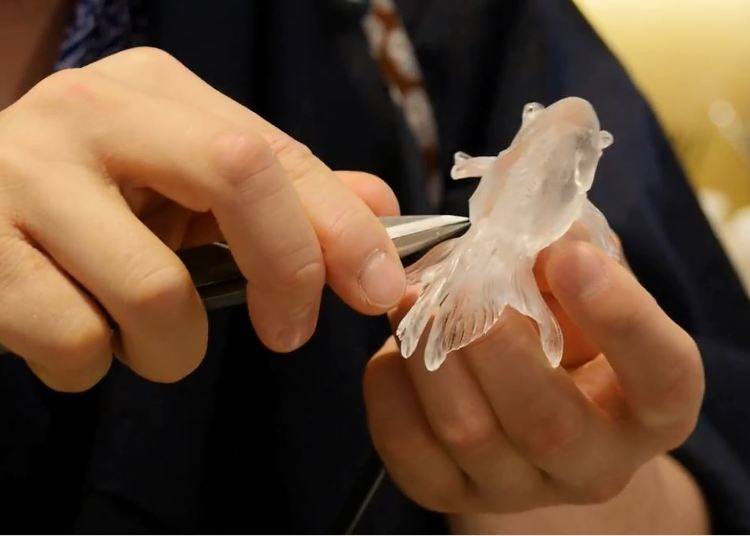

And seeing the process of his art is mesmerizing. Watching Tezuka’s fluid and graceful movements as he manipulates the candy base into an increasingly recognizable form was incredible, his hypnotic precision hinting at countless hours spent honing his art until movements became memory. Indeed, it is said that in old times, some amezaiku artists acted as street performers, entertaining children with amusing stories while captivating them with their handicraft.
Handmade Art
Asked whether he makes other kinds of lifelike sculptures, such as flowers or plants, Tezuka almost immediately he shakes his head. “Flowers can be beautiful, but they’re quite simple compared to animals.” Whereas the forms of plants and objects can be made by machine, animals are fluid and have a unique character to them, given form only by human hands. Given the medium itself is a glossy, textured fluid with a transparency that resembles aquatic life, he prefers to craft creatures which resemble and are connected to water, such as fish and frogs. Just as each animal is unique, so too is each handmade piece, and Tezuka also enjoys changing their poses and other characteristics to reflect a sense of individuality.

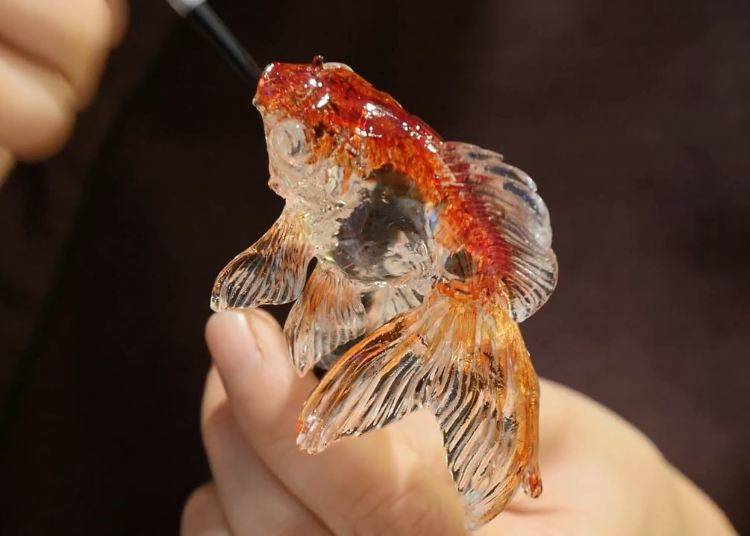
After each piece is created, it is cooled with a fan and then meticulously painted using edible food dyes by his assistant, who uses a variety of brushes to layer assorted colors in order to create a very realistic result.
That Special Gift
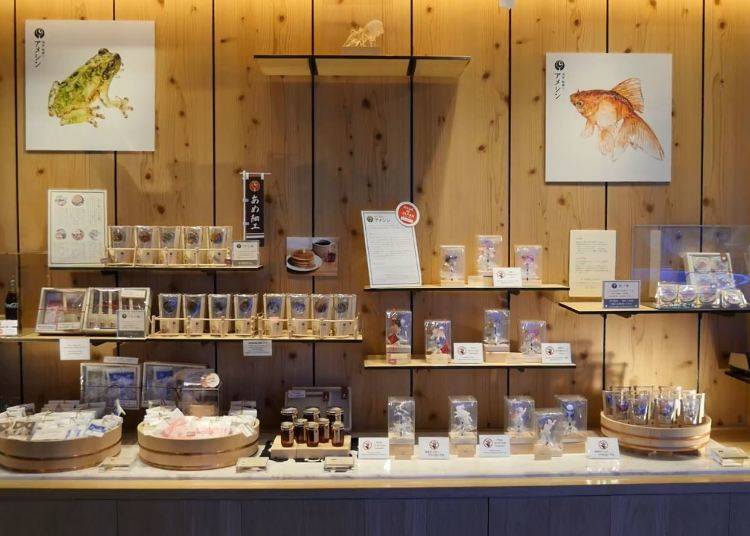
Looking to the future, to help preserve and continue the art of amezaiku, Tezuka is at the moment teaching his craft to eight others so that the techniques can be retained. It is said that no books exist on how exactly to mold amezaiku figures, rather these approaches must be taught in person and refined with much practice over the years. Tezuka is something of a living treasure in that case.
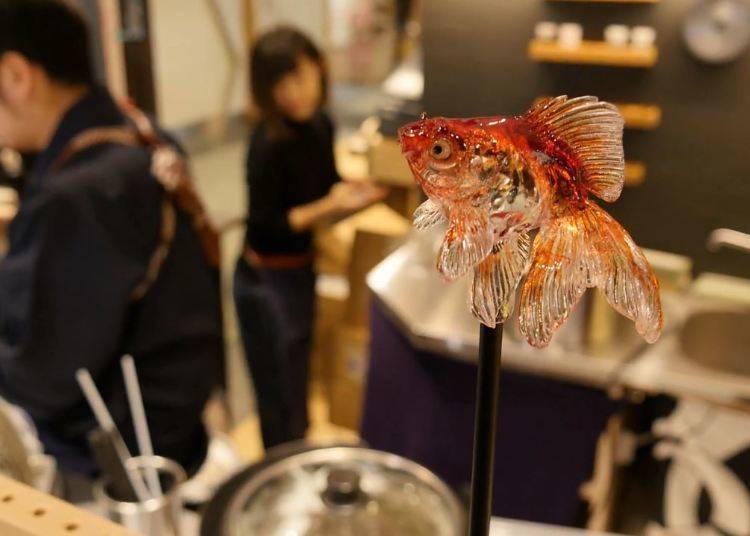
As his assistant places the final touches on an amezaiku masterpiece, an onlooking customer remarks how gorgeous it is. Indeed, if someone is looking for that extra-special gift, amezaiku are sure to thoroughly delight whoever receives them.
-
Asakusa Amezaiku Ameshin (Tokyo Sky Tree Town Soramachi Shop)浅草 飴細工 アメシン 東京スカイツリータウン・ソラマチ店
- Address 4F, Tokyo Skytree Town Solamachi, 1-1-2 Oshiage, Sumida-ku, Tokyo 1310045, Japan
-
Nearest Station
-Oshiage Station
-Tokyo SkyTree Station
- Phone Number 03-5808-7988
Hours: 10:00 a.m. – 9:00 p.m.
Closed: Always open

Chief English Editor
LIVE JAPAN
Timothy Sullivan is a senior English editor who has worked with LIVE JAPAN since 2017. Originally from New York, USA, he has over two decades of experience in Japan and more than 15 years in the digital media sphere. Timothy has played pivotal roles in assisting Japanese enterprises and regional authorities connect with international audiences. When he isn’t traveling, he is helping producing polished copy for LIVE JAPAN, one of Japan’s largest tourism platforms. He received a bachelor’s degree in Communication from the State University of New York College at Geneseo.
- Area
- Category
*Prices and options mentioned are subject to change.
*Unless stated otherwise, all prices include tax.
Popular Tours & Activitiess
Recommended places for you
-

Japan’s Shinkansen Is About to Change Travel in an Unexpected Way
by: Guest Contributor
-

New in Ginza! Air BicCamera Ginza Opens with a Faster, More Convenient Shopping Experience
by: Guest Contributor
-

Strawberries, Style, and Tokyo’s Coolest Neighborhood: Winter Afternoon Tea in Kichijoji
by: Guest Contributor
-
Ad

[Tokyo, Ueno] A Journey to the Sacred Grounds of the Tokugawa Shoguns: A Complete Guide to the "EDO SHOGUN’S LEGACY TRAIL TOUR" – Where Special Access, Modern Art, and Digital Innovation Converge
by: Guest Contributor
-
Ad

Complete Guide to Ueno's National Museum of Nature and Science, the Perfect Place to Visit on Rainy Days or With Children
-

This Winter, Godzilla Takes Over Haneda Airport
by: Guest Contributor
Inspiration for Accommodations
-

Enjoy Mt. Fuji from the Comfort of Your Room! Recommended Ryokan with Mt. Fuji View
-

Stay Near the Cherry Blossoms! Hotels for Cherry Blossom Viewing in Tokyo
-

Family-Friendly Hotels with Free Shuttle to Disneyland: Convenient Access for a Magical Stay
-

Top Ranked Hakone Hotels with Mt. Fuji View: Enjoy Stunning Scenery from Your Private Space
-

Convenient Tokyo Hotels with Airport Shuttle: Ideal for Families and Heavy Luggage
-

Stunning Tokyo Tower View Hotels: Enjoy Spectacular Scenery from Your Private Space
-

Convenient Asakusa Hotels with Kitchens: Ideal for Extended Family Visits
-

Experience Luxury: Hakone's 10 Best Five-Star Accommodations
-

Enjoy Mt. Fuji Autumn Leaves! Top Hotels Near the Popular Autumn Leaves Corridor
-

Experience Hakone Fall Foliage from Your Room with Stunning Views
-

6 Choice Souvenirs and Restaurants at Tokyo Station, the Shopping & Food Paradise!
-

Kuramae Guide: Discovering Arts, Crafts, and the Spirit of Tokyo’s Old Downtown
-

Ueno Station Area Guide: Fun Ways to Explore Tokyo's Popular Destination (Area Map & Sightseeing Tips)
-

Get it at Tokyu Hands! Japan's Top 10 Emergency Goods to Take Home
-

Animate Ikebukuro Flagship Store Set to Become Among World's Biggest Anime Stores
by: Kei Suzuki
-

Tokyo Station Top 10 Sweets Ranking!
- #best ramen tokyo
- #what to buy in ameyoko
- #what to bring to japan
- #new years in tokyo
- #best izakaya shinjuku
- #things to do tokyo
- #japanese nail trends
- #what to do in odaiba
- #onsen tattoo friendly tokyo
- #daiso
- #best sushi ginza
- #japanese convenience store snacks
- #best yakiniku shibuya
- #japanese fashion culture
- #best japanese soft drinks


















